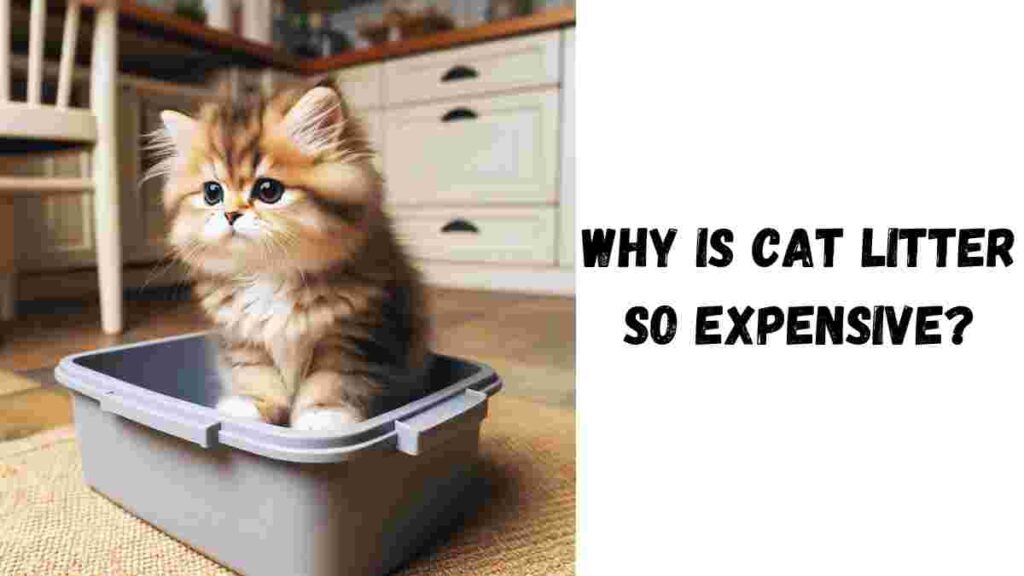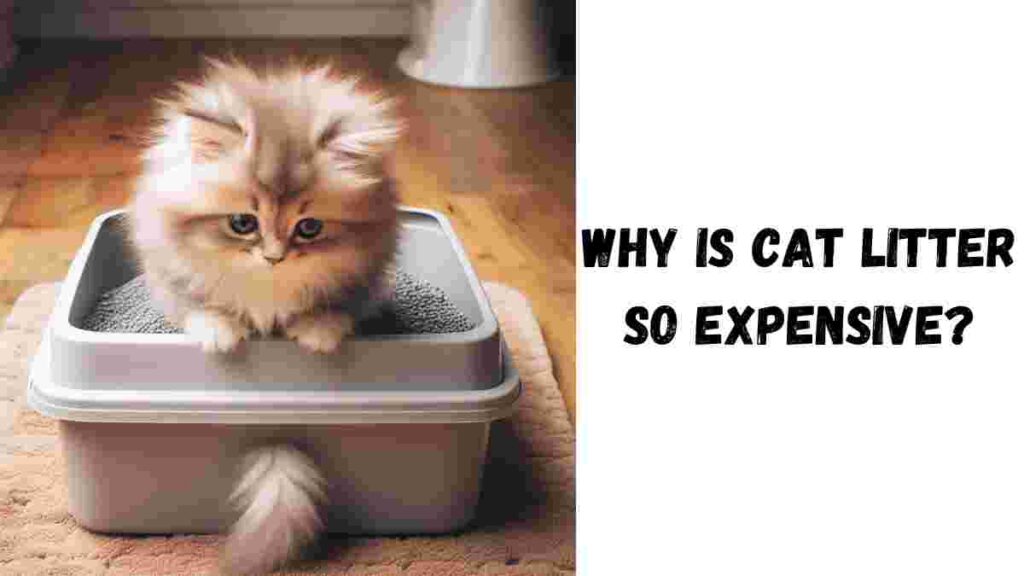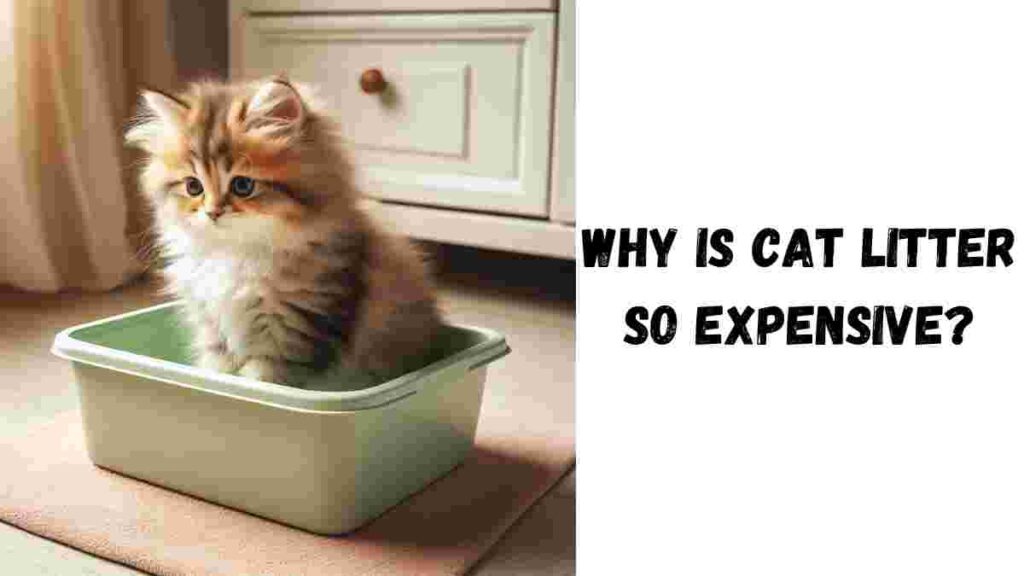Why is Cat Litter so Expensive: For cat owners, cat litter is a necessity as ubiquitous as catnip or mealtimes, and yet its cumbersome price tags may occasionally incite some head-scratching. In this deep dig into feline hygiene, we’re unraveling why cat litter commands such seemingly lofty prices.
Whether you’re a fur parent puzzled over monthly expenditure on your furry friend’s toilet needs or an entrepreneur mulling entry into the pet care market, this exploration promises to scoop out valuable insights.
Let’s understand that in detail, Why is Cat Litter so Expensive?
Find the best litter for your cat friend here
Find the best quality, reasonable litter here

Table of Contents
The Undeniable Relevance of Cat Litter in Pet Care
To grasp the essence of cat litter’s cost, one must first appreciate its indispensability in the daily routine of millions of cat owners worldwide. Modern cat litter shoulder significant duties; it neutralizes odors, absorbs liquids, and, importantly, charms the choosy feline.
Recognizing cat litter as an extension of pet care—capable of ensuring a clean, comfortable, and stress-free environment for both pet and owner—frames our understanding as we start our quest for cost elucidation.
Factors at Play in the Cat Litter Pricing Game
Why is Cat Litter so Expensive: Cat litter prices reflect the dynamic interplay of multiple factors, intricately woven into the market. Here’s a rundown of the primary influences that stack up to form the final price tag.
Quality Reigns Supreme
First and foremost, higher-quality cat litter will likely come with a more elevated price point. Premium litters with enhanced absorption, odor control properties, and clumping efficiency are developed with superior ingredients and might be subject to more rigorous testing and certification processes. These refined characteristics, often backed by scientific research, contribute to a steeper cost—but can also mean a superior cleanup experience for both cats and their caregivers.
Material Matters
Cat litter materials span a spectrum from clay and silica gels to pine and eco-friendly biodegradables. Each material brings with it a distinct production process and cost. Clay litters, a long-standing favorite, are mined and processed, factors which weigh heavily on their pricing. On the other end, eco-friendly litters, like those fashioned from paper or vegetal compounds, can reflect higher initial costs of sourcing or manufacturing, typically passed on to the consumer.
Packaging Precision
Another cost driver is the packaging in which the cat litter is presented. The aesthetic, durability, and practicality of the packaging can all affect pricing. Bags or containers that incorporate ease of use features (like spouts, handles, or resealable closures), and those designed to maintain product freshness, can contribute to a higher price point. Furthermore, the marketing efforts that go into creating and printing packaging designs are expenses that fall onto the consumer’s shoulders.
Branding and Beyond
Brand recognition and market positioning also nudge cat litter prices. Renowned companies with established reputations often charge a premium, while newer or lesser-known brands must price more competitively to penetrate the market. Brand value isn’t just about the product but can reflect the company’s history, customer service standards, and even sustainability initiatives.

Inside the Price Tag: A Cat Litter Cost Breakdown
Considering all the aforementioned factors, the specific cost breakdown for cat litter can be segmented into three core areas.
Cost of the Core Material
Raw material expenses are the bedrock of any product’s price. For cat litter, it involves costs associated with acquiring the primary ingredient, be it mined clay, sourced wood, or synthesized silica. These costs fluctuate with market demand, labor, and transportation fees, making the cost of the material a potential point of variability.
The Manufacturing Mix
Manufacturing cat litter involves heavy machinery, energy, and labor. From processing clay to turning it into tiny granules, or from compressing pine into pellets, these processes are often intensive and hence, expensive. R&D costs for new products, and ongoing quality control measures, also funnel into the production overheads.
From Warehouse to your Home
Once the cat litter is ready, it must go through a series of steps before reaching the shelf. Distribution, including warehousing, transportation, and retailer fees, is the next cost layer. Retailers also implement their markups to cover store expenses, staff wages, and profit margins, collectively adding to the ticket price.
Unboxing Consumer Behavior in Cat Litter Consumption
Understanding human behavior within the marketplace unveils additional layers to cat litter costs.
Demand-Supply Dynamics
Global economic shifts or pet care trends can send ripples through cat litter prices. Unforeseen events, like a spike in pet ownership or a disruption in raw material supply chains, can lead to increased prices. Conversely, oversupply scenarios might result in promotional pricing or sales, which savvy shoppers can take advantage of.
Seasonal and Regional Swings
Cat litter costs often mirror the ebb and flow of the seasons. Cold weather and holidays, when more indoor time is spent with pets, can lead to heightened demand and potentially higher prices. Conversely, quieter seasons might offer more stable or even discounted prices.
In-Store vs. On-Screen
Where and how consumers purchase cat litter can impact its perceived cost. Brick-and-mortar stores may include display or handling fees that are not present in online venues, which might instead charge shipping or have lower overheads. The convenience of delivery may be factored into online prices, which often fluctuate more erratically than those in stores.
Saving on Cat Litter Without Compromising Care
Thankfully, managing cat litter costs doesn’t necessitate skimping on the comfort of your cat, or control of your living space aroma. Here are some budget-friendly strategies:
- Buy in bulk when prices are low.
- Consider using litter that’s more versatile, potentially reducing the need for multiple cleaning products.
- Opt for self-cleaning or longer-lasting clumping litters that minimize the frequency of litter changes.
- Explore less conventional but safe and efficient litter materials that are friendlier on your pocket and the planet.
The Kitty Litter Prices of Tomorrow
The pet care industry, cat litter included, is continually innovating as consumer preferences and environmental awareness evolve. Expect to see more sustainable options, technology-infused products that enhance cleanliness and convenience, and possibly shifts in pricing models as the market adapts.

Wrapping Up – Why is Cat Litter so Expensive?
Why is Cat Litter so Expensive: By deconstructing the elements that compose cat litter prices, we appreciate the intricacies involved in its market value. Cat litter, though sometimes seemingly luxurious in price, is an indispensable tool in modern pet care.
It’s not just about what you’re paying, but what both you and your feline friend are gaining—comfort and well-being. Engaging with smart purchasing habits and staying educated on the options available ensures that the cat litter costs you encounter are justified by the unparalleled service it provides in your home.
Hope you found the answer to the question, Why is Cat Litter so Expensive?
Frequently Asked Questions (FAQs) – Why is Cat Litter so Expensive
Is it really worth paying more for premium cat litter?
While more expensive, premium cat litters often offer benefits like improved odor control, less dust, and potentially longer usage before needing replacement. Your choice should depend on your and your cat’s preferences, any allergies, and whether these benefits justify the additional cost for you.
Can I use alternative materials as cat litter to save costs?
Yes, there are several cost-effective, alternative materials such as wood shavings, recycled paper pellets, and even certain types of sand or dirt that can be used. However, it’s crucial to ensure these materials are safe and non-toxic for cats. Always research or consult with a veterinarian before switching.
How can I extend the life of my cat litter?
Regularly removing clumps and solid waste, keeping the litter box in a dry place, and adding a bit more litter after removals can help extend its life. Some litters also perform better when mixed or topped with baking soda to control odors longer.
Are there any environmentally friendly cat litter options that don’t break the bank?
Yes, there are eco-friendly options like biodegradable corn, wood, wheat, or recycled paper-based litters. While some might have a higher upfront cost, their efficiency, biodegradability, and often lower overall use rate make them a cost-effective and earth-friendly choice in the long run.
How do online prices compare with in-store prices for cat litter?
Online prices can sometimes be cheaper due to lower overhead costs, and shopping online also makes it easier to compare prices and find discounts or bulk-purchase deals. However, consider the shipping costs, which can offset these savings.
You May Also Like
